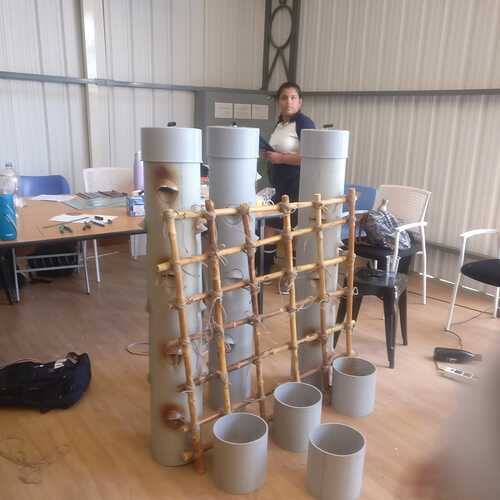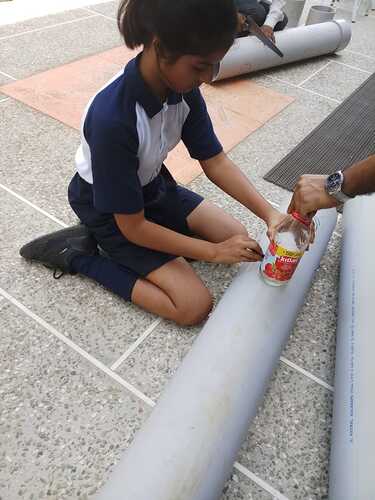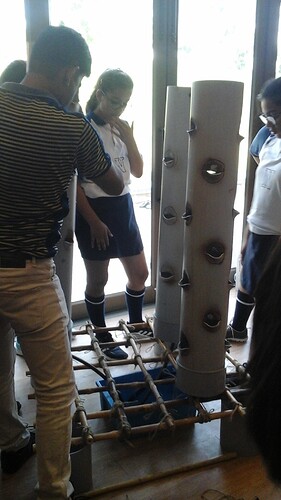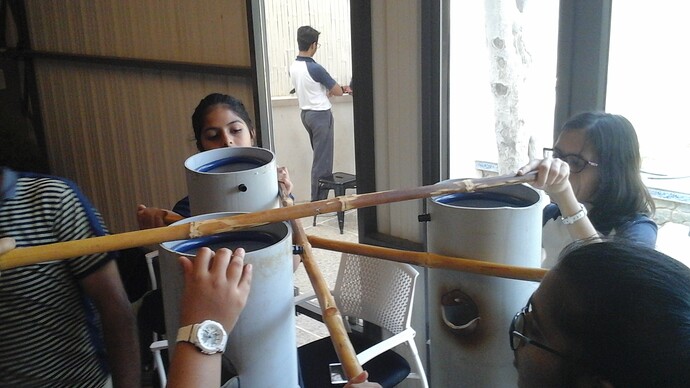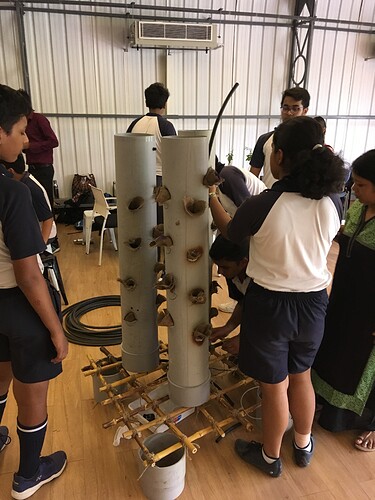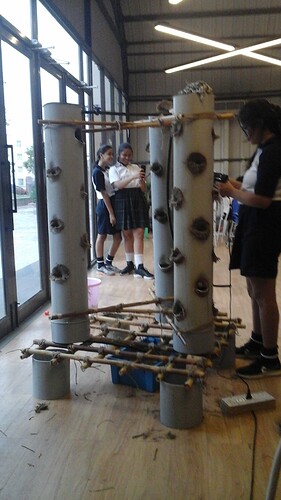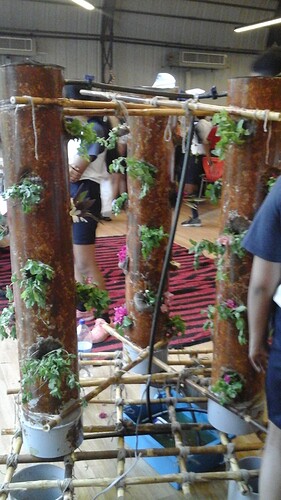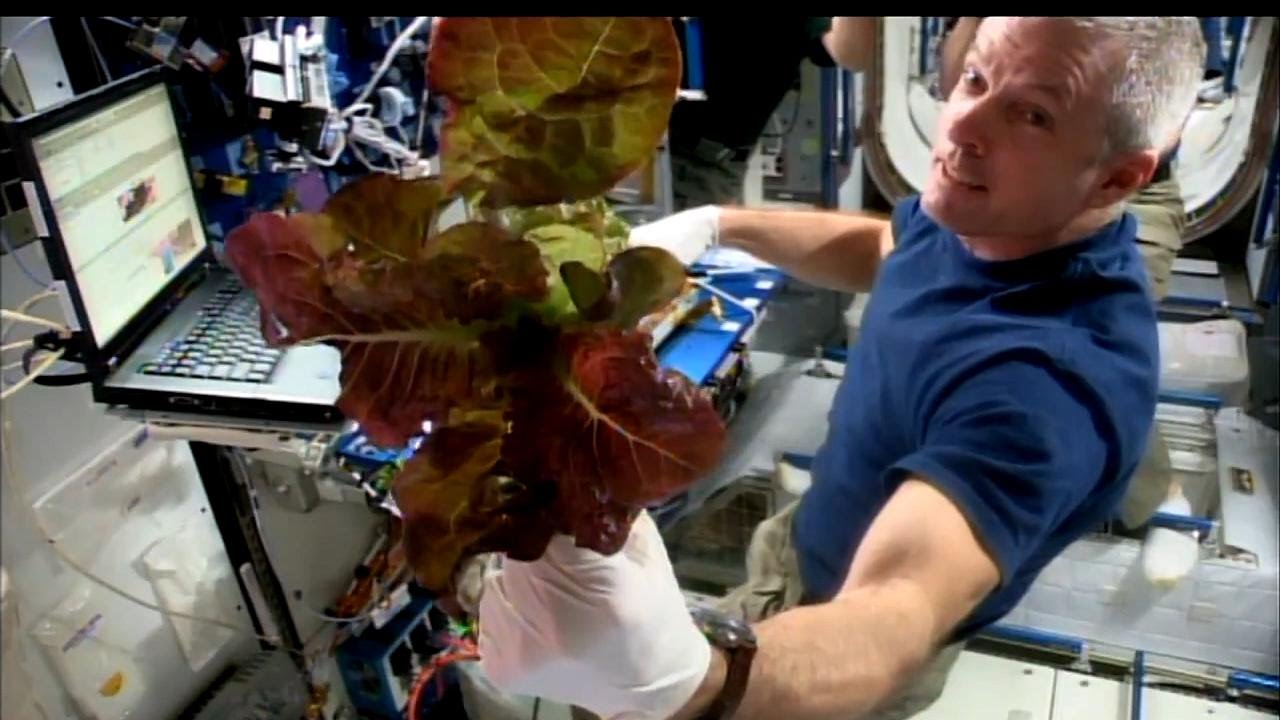Write about:
What STEM activity are you doing today?
What is the STEM take-home point of today?
What is the STEM activity picture you want to share today?
What is the big STEM idea you want to share with us?
Drawing holes on pipe and melting them
Making base for towers with bamboo sticks and jute ropes
The driponics system is more interesting than I thought. The plants would be benifitted.
 first fill the pipe with sand and put it in thecontainer and heat it till it gets its shape…
first fill the pipe with sand and put it in thecontainer and heat it till it gets its shape…
thats good that you have recoirded your work using photos
but you shouid also add some info toooo
How can you make your system off grid …so that i don’t need the pump and clean water supply
Can i connect it to the outlet of my kitchen sink …will i be saving more resources this way
Kindly throw some light
Does a person need to be trained so that the nutrient requirements of plants are managed in such a way so that things don’t go wrong …
Can i use this method to grow plants on moon or on any other plannet
The pump re circulates water and hence saves water. Without re-circulation there will be a lot of waste of water.
Connecting to the kitchen outlet - I presume you mean the kitchen sink drain - will likely cause a problem because any kitchen waste in water is likely to breed bacteria that may damage roots. Additionally one would have to rely on gravity to circulate water, thus placing a lot of constraint on location of towers, which would have to be below the kitchen outlet.
However such height constraints permitting, it wold be possible to place an intermediate water conditioning tank that receives kitchen waste water. This tank should be inoculated with a little cow urine, gobar and jaggery. Stir the water twice a day vigorously for aeration. The bacteria in the cow urine and gobar perform anaerobic and aerobic chemical reactions converting organic waste into nitrates, phosphates, potassium nutrients and result in a very good fertilizer filled water. This is a variation on a technique used in permaculture.
Here's How This Pune Woman Grew Her Own Food Organically
Understanding of the principle and growth cycle is definitely useful.
Post your findings here.
It was apparently developed by NASA to avoid having to carry soil (bulk) on spacecraft.
I don’t know how extensively it is used currently, as there aren’t any major reports and videos of space gardens, which would surely be the case if it were in regular use. So possibly in an experimental stage in actual space yet?
To take out the electricity component, you’d have two choices. Both would likely involve a gravity fed tank that either drips nutrient solution using gravity, or a gravity fed tank that is high up enough that can spray nutrient filled solution with gravity providing enough pressure. Collected water would have to be returned manually to the tank.
Using the kitchen sink outlet isn’t practical, because it would also have food waste, detergent, etc that may not work for plants. Bacteria is probably less of a concern. Composting microbes are generally very plant friendly. A bigger concern would be the food waste attracting fungus gnats that destroy roots. Nutrition may not be very balanced either.
It could be possible to create some sort of tray system for growing plants in clay pellet media using kitchen sink waste where you grow them along with earthworms. You would have to ensure that the detergent used in your kitchen is eco-friendly.
Using good water from a tap wouldn’t work because it has no nutrition. The plants wouldn’t grow for long in it, unless they were carnivorous plants or orchids, etc that can thrive on other sources of fertilization and prefer pure water for roots.
